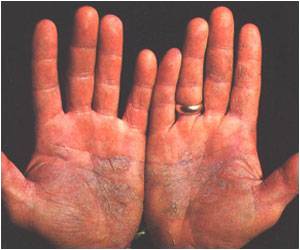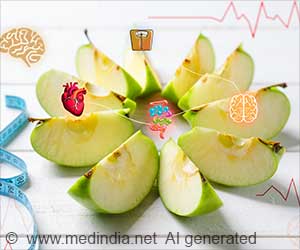Bioengineered skin that mimics real human tissue offers a cruelty-free, accurate alternative to animal-based toxicity testing.
- 3D printing technology is used to create lifelike skin with living human cells
- Synthetic skin mimics human responses for testing cosmetics and medical treatments
- Animal testing could be eliminated by reliable lab-grown skin alternatives
Created through advanced 3D printing techniques, the artificial skin consists of specially formulated hydrogels combined with living cells. The materials must meet strict biological and mechanical criteria to enable the skin cells not just to survive, but also to grow and replicate, mimicking real human tissue over time (1✔ ✔Trusted Source
3D-printed skin imitation equipped with living cells could replace animal testing
Go to source).
Over 500,000 animals are harmed or killed every year for cosmetic testing, but 3D-printed skin made with living cells could soon replace the need for animal testing entirely. #medindia #3dprintedskin #crueltyfreetesting’
Water-Rich Hydrogels as Skin Model Base
Hydrogels form the foundation of these synthetic skin models due to their exceptionally high water content, which mimics the natural cellular environment of human skin. This water-rich base promotes ideal conditions for cell interaction, allowing the embedded human cells to develop into structured tissue layers (2✔ ✔Trusted Source3D-printed 'skin' may end animal testing for cosmetics and drugs
Go to source).
However, the same high moisture content that benefits cell growth also requires the hydrogel to be chemically and mechanically stabilized for it to be a viable material. Researchers have developed gentle cross-linking methods to reinforce the structure without using substances that are toxic to cells, ensuring the printed models maintain integrity throughout the testing process.
Successful Integration and Testing in Laboratory Conditions
Initial experiments involving cell cultures have demonstrated strong potential. The stabilized, cross-linked hydrogel was confirmed to be non-toxic and maintained its shape and functionality for extended periods under lab conditions. Once cells were able to survive and form skin-like layers over two to three weeks, the constructs were considered suitable for further testing.Scientists have already begun using these synthetic models to examine how nanoparticles interact with and penetrate the skin. These particles, often found in cosmetic formulas, can pose risks when absorbed by the body. The printed skin's ability to mimic human reactions opens up new avenues for testing without causing harm to animals.
Potential Applications in Drug Development and Wound Treatment
In addition to replacing animal testing for cosmetics, the technology is expected to be adapted for pharmaceutical research and even medical applications like wound healing. By replicating human skin responses more accurately than traditional methods, the models could improve the reliability of toxicity and safety evaluations across industries.As these synthetic skin models become more refined, they offer a compelling solution to ethical concerns around animal testing. An estimated 500,000 animals are still used globally each year in cosmetic trials. Replacing these tests with engineered skin could mark a turning point in humane scientific research.
Global Scientific Synergy in Skin Model Development
This breakthrough is the result of an international partnership combining expertise in material science and cellular biology. The effort has brought together specialists in bio-based systems and molecular biology, whose collaboration has accelerated development and testing of the skin substitutes.The next stage involves refining the hydrogel formulations and validating the models across a wider range of testing scenarios. With continued progress, these synthetic structures may soon serve as the gold standard in testing safety and toxicity of substances applied to human skin.
In conclusion, the development of 3D-printed skin with living human cells marks a significant step toward more ethical, accurate, and sustainable testing methods. As the technology continues to evolve, it holds the promise of replacing animal testing across multiple industries.
References:
- 3D-printed skin imitation equipped with living cells could replace animal testing - (https://phys.org/news/2025-04-3d-skin-imitation-equipped-cells.html)
- 3D-printed 'skin' may end animal testing for cosmetics and drugs - (https://www.newsbytesapp.com/news/science/3d-printed-skin-developed-for-cosmetic-pharmaceutical-testing/story)
Source-Medindia
















